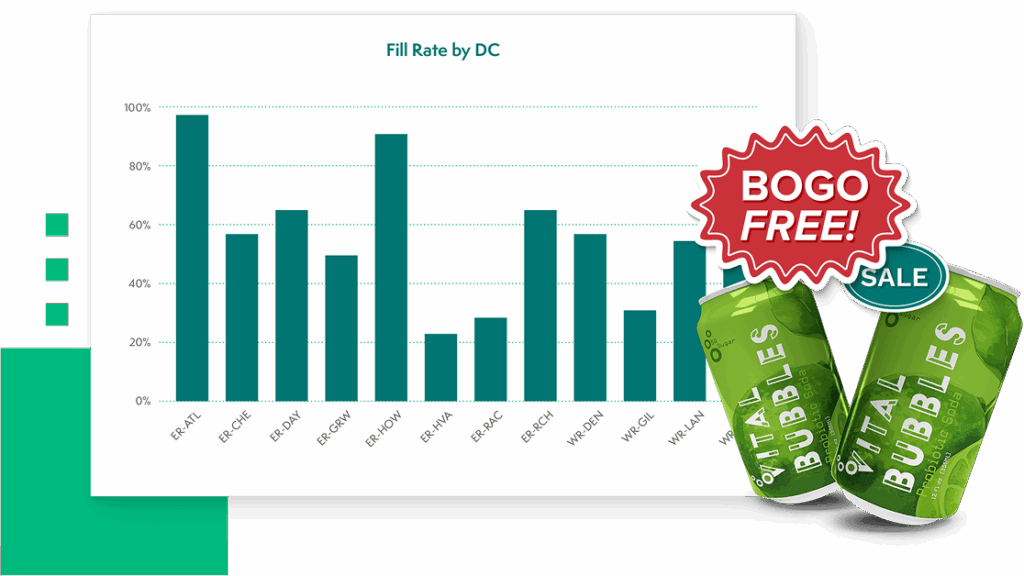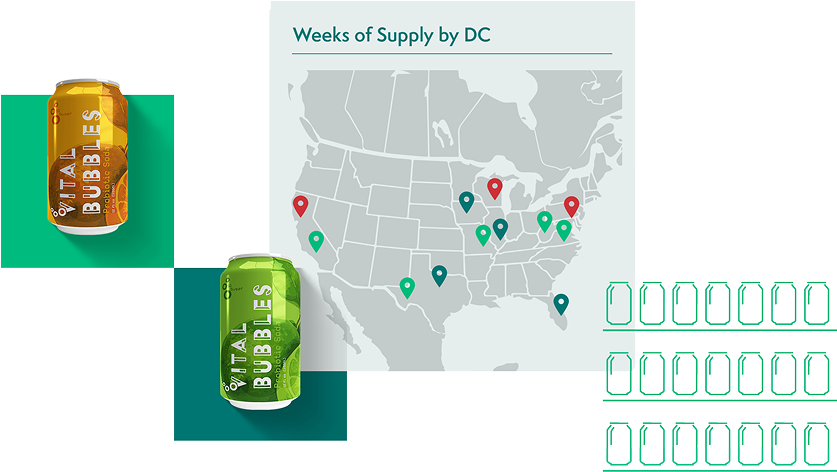As major CPG acquisitions reshape retail, clean, connected data is the secret to sustaining market momentum.
Meet the unsung hero of the ongoing eruption of M&A in CPG: data. From Mars’ $35 billion acquisition of Kellanova to PepsiCo’s $1.95 billion purchase of poppi, this year’s deals signal a hard turn toward data-driven growth strategies.
What doesn’t make the headlines, however, are the complex integration challenges that can make or break success. Increasingly, players recognize that strong data foundations – cleansed, automated, and consistent – are what allow mergers to generate value quickly while preserving market momentum. So what does data really look like as a driver of M&A success?
Key challenges during CPG M&A:
- Knowledge preservation and assimilation of data, tools, and talent
- Expediting information integration and accessibility for Field and HQ teams
- Maintaining focus from the disruption of ownership change
- Understanding the success or failure of plans quickly without deep knowledge bases
- Integrating brands into normal processes seamlessly to ensure continued success
Increasingly, players recognize that strong data foundations – cleansed, automated, and consistent – are what allow mergers to generate value quickly while preserving market momentum.
Accessible data makes portfolio expansion make sense
Big-ticket deals like Ferrero’s acquisition of WK Kellogg or Campbell’s purchase of Sovos Brands capture plenty of attention, but behind the headlines, teams must stitch together vast legacy systems that have evolved differently over decades. The promise of portfolio expansion is speed and scale, but without a unified data foundation, synergies can be slow to materialize.
The challenge: Parts that don’t work as a whole
Bringing new brands into a CPG portfolio can present several simultaneous troubles. Roles become duplicated. Systems don’t talk to each other. Sales metrics look different across brands. Teams face uncertainty about their path forward, even as they’re under pressure to show quick wins.
The last thing you want is to buy a company to gain momentum – then lose it.
Operational realities to address
- Training retailer teams – Account teams have to learn the new brands and how to integrate them into planning. Syndicated data fails to provide retailer-specific intel, which can lead to a less-than-inspired approach to selling. Teams could be giving existing brands more attention rather than channeling focused energy into the new brand to build momentum for a healthy integration and long-term success.
- Portfolio pruning and employee disruption – Mergers often consolidate roles and responsibilities, creating knowledge gaps that can become overwhelming. Granular, retailer-specific data helps preserve continuity while supporting employees being integrated into the new organization with a flow of shared, centralized – real-time and historic – data insights.
Syndicated data fails to provide retailer-specific intel, which can lead to a less-than-inspired approach to selling. Teams could be giving existing brands more attention rather than channeling focused energy into the new brand.
The solve: Normalize without disrupting
Crisp simplifies integration by ingesting, normalizing, and mapping data from each brand into a consistent reporting framework. Teams can see daily reporting, from a high level down to the individual store and SKU-level, in both legacy and new formats throughout any transition.
Reliable and accurate data across sales, finance, supply chain, category management teams, and more, creates alignment and clarity without derailing day-to-day operations.
Build marketing momentum: What’s more, headquarters-based marketing and shopper marketing teams – who have traditionally relied on syndicated reports – can access clean, retailer sales and inventory data down to the SKU- and store-level to build campaigns and promotions based on sales performance and stock levels, instead of broader market trends.
PepsiCo-acquired poppi continues its Crisp partnership following groundbreaking results linking real-time POS data with digital campaigns that drove an 80% in-store sales increase.
Instead of bottlenecks and mismatched reporting, CPG enterprises leveraging clean retail data see a single source of truth that supports faster, more optimal decision-making to deliver organization-wide ROI.

Leaders cite their biggest challenges in this 2025 Promotion Optimization Institute report:
- 51% – HQ lacks capabilities to support pricing, trade allocations, and go-to-market strategies
- 40% – Inadequate data cleansing and harmonization
- 38% – Data and insights not leveraged fully
Reliable and accurate data across sales, finance, supply chain, category management teams, and more, creates alignment and clarity without derailing day-to-day operations.

AI Blueprints for post-merger optimization
Companies with strong data foundations are well positioned for advanced AI-driven analytics that speed value generation. Crisp’s AI Blueprints are ready to go for real-time answers to the most important questions across combined portfolios and market opportunities, and can additionally be activated in Databricks Genie:
- Assortment Optimization
- Where is the product mix underperforming?
- What are some strategic regional recommendations?
- Distribution Expansion
- What are the high-potential stores with unmet demand?
- Where can product reach be expanded?
- Demand Forecasting
- Where can stockouts be reduced?
- Where should overstock of these SKUs be shifted?
- And beyond
- Crisp AI Blueprints also include data science-ready models for Demand Redistribution, Weather Analytics, Anomaly Detection, Store Clustering, and more – giving post-merger and acquisition-interested teams the ability to quickly spot risks and act on new opportunities.

Crisp AI Agent Studio for Retail
Crisp AI Blueprints set the stage for AI-activated insights and smarter portfolio optimization. AI Agents go beyond analytics to act on data. With Crisp AI Agent Studio for Retail, teams move beyond static reporting to continuous performance optimization. Agents surface insights in real time, send proactive alerts, and can even trigger workflows across sales, supply chain, and category management. Sign up for the private beta of Crisp AI Agent Studio for Retail and be the first to orchestrate retail performance with true agentic AI.
AI Agents go beyond analytics to act on data. With Crisp AI Agent Studio for Retail, teams move beyond static reporting to continuous performance optimization.
Implement acquisition-ready data infrastructure
Crisp makes data acquisition-ready by ingesting and normalizing feeds across retailers and distributors, then streamlining reporting in real time. The platform further enables seamless master data management (MDM), which harmonizes product attribution across ingredients, pack sizes, and channels. From there, the clean retail data is centralized in the BI tools and cloud platforms of choice, giving teams daily visibility into inventory, granular sales trends, and actionable market opportunities.
People first, powered by data
M&A success ultimately comes down to people plus data. Automated, consistent data flows ease team stress and eliminate human errors during already challenging transitions. At the same time, they provide the reliable information leaders need for strategic decisions while freeing human resources for what matters most: cultural adaptation, relationship building, and execution.
During a time when clarity is critical, teams can save hours each day otherwise spent pulling reports for executives, and instead keep their focus on delivering strategic value.
Organized data provides the reliable information leaders need for strategic decisions, while freeing human resources for what matters most: cultural adaptation, relationship building, and execution.
Ready for your next big move? Book a demo with Crisp to build an acquisition-ready data foundation and make seamless integrations a reality.